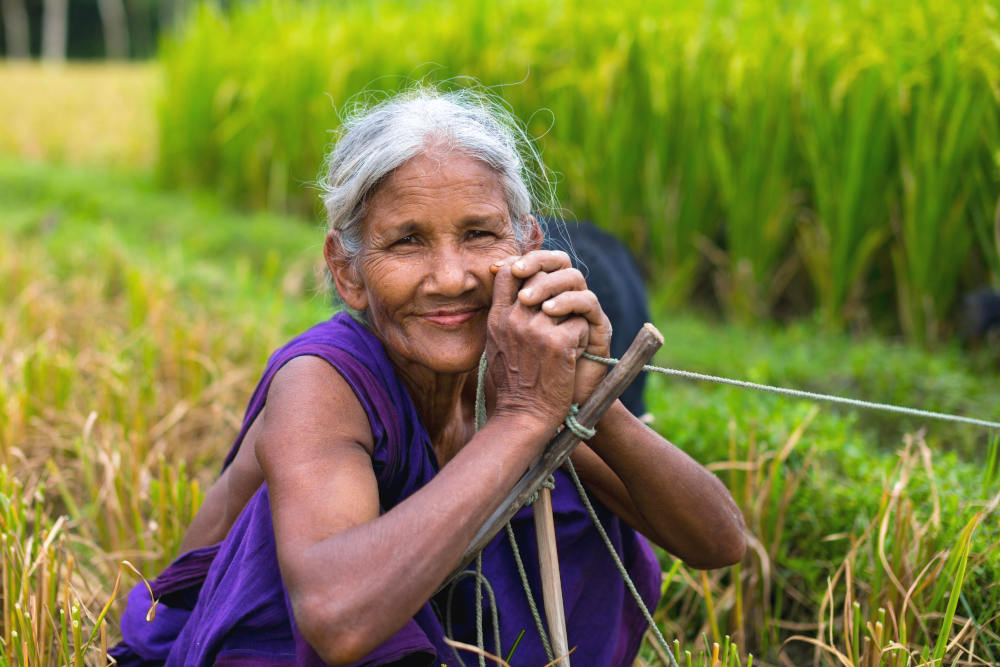
Across cultures and centuries, seasonal festivals have marked the turning of the year with rituals that honor life, death, and rebirth. Among these traditions, one theme appears again and again: the presence of ancestors. From the Celtic festival of Samhain to Slavic Dziady, Mexican Día de los Muertos, and East Asian Ghost Festivals, many communities believed the veil between the living and the dead grew thin at specific times of the year.
Samhain, celebrated at the end of harvest in Celtic lands, is perhaps the most famous example. It was not just a festival of the dead but a time when ancestors returned to guide, bless, and protect the living. Other cultures shared similar beliefs, showing how universal the role of ancestors is in seasonal rites.
In this article, we’ll explore how ancestors were honored during Samhain and other seasonal festivals, why they were considered powerful at these turning points of the year, and what these traditions reveal about humanity’s enduring relationship with those who came before us.
Panaprium is independent and reader supported. If you buy something through our link, we may earn a commission. If you can, please support us on a monthly basis. It takes less than a minute to set up, and you will be making a big impact every single month. Thank you!
Samhain: Celtic Gateway Between Worlds
Seasonal Context
Samhain (October 31–November 1) marked the end of the Celtic harvest season and the beginning of winter. It was a liminal time, standing between the old year and the new, when the boundary between the living and the dead was believed to dissolve.
Ancestors at the Hearth
-
Families set extra places at the table for deceased relatives.
-
Food and drink were left by the hearth or at the doorstep as offerings to wandering souls.
-
Hearth fires were extinguished and relit from a communal bonfire, symbolizing unity with both the living community and ancestral spirits.
Protective Measures
While ancestors were welcomed, not all spirits were benevolent. Charms, costumes, and turnip lanterns were used to ward off harmful beings that roamed alongside the honored dead.
Samhain illustrates how ancestors were viewed not only as beloved family but also as guardians at the threshold of winter.
Slavic Traditions: Dziady and Ancestor Feasts
In Slavic regions, similar customs existed around the same time of year. Dziady, or “Grandfathers’ Night,” was celebrated in autumn and spring as a way to commune with the dead.
-
Food offerings were placed on graves or at crossroads to nourish ancestral spirits.
-
Special rituals were performed to guide wandering souls back to the otherworld.
-
Storytelling and songs kept ancestral memory alive within the community.
Like Samhain, Dziady shows that honoring the dead ensured fertility, protection, and balance for the living.
Día de los Muertos: The Mexican Celebration of Ancestors
While rooted in Indigenous traditions blended with Catholicism, Día de los Muertos (Day of the Dead) shares many parallels with Samhain. Celebrated on November 1–2, it focuses on welcoming ancestors home for a brief visit.
-
Families build altars (ofrendas) decorated with food, flowers, photos, and candles.
-
Cemeteries become lively gathering places where families celebrate with their dead.
-
The marigold flower, believed to guide spirits with its scent and color, acts as a spiritual beacon.
Here, ancestors are not feared but joyfully embraced, emphasizing continuity and community.
East Asian Ghost Festivals
In China and parts of East Asia, the Ghost Festival (celebrated in the 7th lunar month) reflects similar ancestral themes.
-
It was believed that gates of the underworld opened, releasing spirits.
-
Families burned incense, paper money, and offerings to honor ancestors and appease restless souls.
-
Festivals included opera, storytelling, and feasts shared with both living and dead.
Just as in Samhain, the focus was on maintaining harmony between worlds, ensuring that ancestors remained benevolent allies.
Ancestors in Seasonal Cycles
Why did so many cultures connect ancestors with seasonal festivals? The answer lies in the cyclical worldview of premodern societies.
-
Harvest and Death: Harvest meant cutting down crops—life sacrificed to sustain life. Ancestors symbolized this cycle of death feeding renewal.
-
Winter Survival: As communities prepared for scarcity, ancestral blessings offered psychological and spiritual comfort.
-
Liminal Times: Solstices, equinoxes, and cross-quarter days were viewed as thresholds—moments when the ordinary order of time was disrupted, allowing ancestors to cross over.
-
Fertility and Continuity: Honoring ancestors was believed to ensure fertile fields, healthy livestock, and strong family lines.
Shared Ritual Practices
Across Samhain and other festivals, common threads emerge in how ancestors were honored:
-
Food Offerings: Bread, milk, honey, or seasonal crops symbolized nourishment for spirits.
-
Lighting Fires and Candles: Flames guided souls home and protected the living from darker forces.
-
Storytelling and Memory: Oral traditions reinforced ancestral presence in community identity.
-
Sacred Spaces: Altars, graves, or hearths served as points of contact between living and dead.
These rituals reinforced the bond between generations, making ancestors active participants in seasonal cycles.
The Protective Role of Ancestors
Ancestors were not only remembered—they were seen as powerful protectors.
-
In Celtic tradition, ancestral spirits were invoked for protection during the dark winter.
-
Slavic households believed ancestors kept watch over the hearth and fields.
-
African and Indigenous traditions often view ancestors as intermediaries between humans and divine powers.
By honoring them at seasonal thresholds, people ensured that ancestral blessings flowed into the year ahead.
Ancestors in Other Seasonal Festivals
While Samhain is the most famous, other seasonal points also honored ancestors:
-
Midwinter (Yule): In Nordic tradition, ancestral spirits were thought to visit during the Twelve Nights of Yule. Food was left out to honor them.
-
Spring Festivals: In both Slavic Dziady and Japanese Obon, ancestors were honored in spring or summer as part of agricultural cycles.
-
Harvest Feasts: In many Indigenous cultures, the first fruits or grains were offered to ancestors before the living could eat.
This pattern reveals that ancestors were not tied to one season but were woven throughout the year’s turning points.
Christian Adaptations of Ancestral Festivals
When Christianity spread across Europe, many ancestral customs were reinterpreted.
-
All Saints’ Day (Nov 1) and All Souls’ Day (Nov 2): These Christian holidays absorbed Samhain traditions, focusing on prayers for the dead.
-
Churchyard Feasts: Medieval communities often held meals on graves, echoing older ancestor rites.
-
Candle Traditions: Lighting candles in memory of the departed preserved the older symbolism of guiding ancestral souls.
These adaptations show how deeply ingrained ancestor veneration was in seasonal life—it could not be erased, only transformed.
The Psychological and Social Importance
Honoring ancestors at festivals served multiple purposes:
-
Cultural continuity: Stories and rituals preserved identity across generations.
-
Community bonding: Shared ceremonies strengthened ties within villages.
-
Coping with mortality: Rituals provided comfort in the face of death and loss.
-
Moral guidance: Ancestors were seen as watching over descendants, encouraging ethical behavior.
These functions highlight why ancestral presence was central to seasonal festivals worldwide.
Modern Revival of Ancestor Practices
In recent decades, there has been a resurgence of interest in ancestral traditions. Neo-pagan, Wiccan, and folk practitioners often revive Samhain ancestor rituals:
-
Creating ancestor altars with photos, candles, and seasonal foods.
-
Holding silent dinners, known as “dumb suppers,” to honor the dead.
-
Visiting cemeteries to tend graves and leave offerings.
Even outside spiritual traditions, practices like family reunions, genealogical research, and cultural festivals reflect a continuing desire to connect with those who came before us.
Conclusion
From the firelit hills of Celtic Samhain to the colorful altars of Día de los Muertos, the role of ancestors in seasonal festivals reveals a shared human truth: we are never alone in the turning of the year. Ancestors walk beside us, guiding, protecting, and reminding us that life is part of a greater cycle.
By honoring them at times of seasonal change, communities found meaning, security, and hope. Whether through offerings at the hearth, songs at the graveside, or candles in the dark, these traditions continue to inspire.
In every season, the message remains: to look to the future, we must also remember and honor the past.
Was this article helpful to you? Please tell us what you liked or didn't like in the comments below.
About the Author: Alex Assoune
What We're Up Against
Multinational corporations overproducing cheap products in the poorest countries.
Huge factories with sweatshop-like conditions underpaying workers.
Media conglomerates promoting unethical, unsustainable products.
Bad actors encouraging overconsumption through oblivious behavior.
- - - -
Thankfully, we've got our supporters, including you.
Panaprium is funded by readers like you who want to join us in our mission to make the world entirely sustainable.
If you can, please support us on a monthly basis. It takes less than a minute to set up, and you will be making a big impact every single month. Thank you.































0 comments